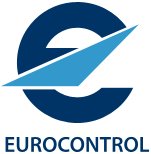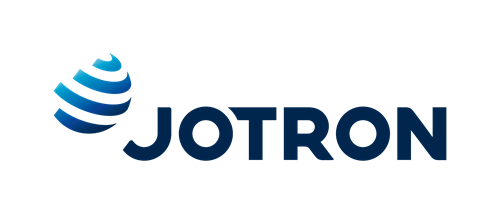New regulations on Surveillance Performance and Interoperability (SPI); Aircraft Identification (ACID)

Following the positive opinion of the Single European Sky Committee on the Surveillance Performance and Interoperability (SPI) and Aircraft Identification (ACID) implementing rules, the European Commission is proceeding with the formal adoption process.
EUROCONTROL developed these regulations, in close cooperation with stakeholders, on receiving mandates from the European Commission. EASA provided the essential safety oversight role.
Once implemented, these regulations will help harmonise the performance and interoperability of surveillance systems as well as allow for the continuous and unambiguous identification of individual aircraft. When implemented, these regulations will make a positive contribution to the efficiency and safety goals of the Single European Sky (SES).
The SPI implementing rule spells out the requirements for the performance and the interoperability of surveillance in the European Air Traffic Management Network. The rule will facilitate the transition to new surveillance technologies and applications which will improve overall safety and efficiency in Europes Air Traffic Management system.
Accepted in tandem with the SPI implementing rule, the ACID one will require ANSPs to use downlinked aircraft identification for identifying aircraft, without having to use the discrete Secondary Surveillance Radar (SSR) codes alone.
The problem with the four-digit SSR codes currently used to identify aircraft is that there are only 4,096 unique ones available. As there are up to 33,000 flights per day in Europe, two aircraft with the same code could be flying at the same time in the same area, which is a potential safety issue. This is a problem that has been growing more significant over time and necessitated this Europe-wide regulation.
ANSPs will have to apply the new rule from 2012 for at least half of the flights in the core area of Europe. From January 2020 onwards, the rule will be applied throughout the Single European Sky. In practical terms, this means that at least one layer of Mode A/C radars will have to be replaced by other ways of acquiring and processing downlinked aircraft identification: Mode S, ADS-B or Multilateration.
One of the possible - and most cost-effective - means of compliance for the ACID implementing rule is a system called the Centralised Code Assignment and Management System (CCAMS) which will run under a central server operated by the Network Manager (NM)*. In fact, controlling this system will form part of the NMs duty to manage transponder codes, as stipulated in the Network Manager Implementing Rule.
The regulation was developed after a thorough impact assessment and in-depth discussion with ANSPs.
"We are delighted at the Single Sky Committee's acceptance of both these rules. The SPI one was the most challenging but ACID is a product that will prove to be a workable solution to a real problem and has already met with a gratifyingly high level of acceptance, observed Luc Tytgat, EUROCONTROLs Director Single Sky.
(*) EUROCONTROL is expected to be nominated as the Single European Skys Network Manager.
Once implemented, these regulations will help harmonise the performance and interoperability of surveillance systems as well as allow for the continuous and unambiguous identification of individual aircraft. When implemented, these regulations will make a positive contribution to the efficiency and safety goals of the Single European Sky (SES).
The SPI implementing rule spells out the requirements for the performance and the interoperability of surveillance in the European Air Traffic Management Network. The rule will facilitate the transition to new surveillance technologies and applications which will improve overall safety and efficiency in Europes Air Traffic Management system.
Accepted in tandem with the SPI implementing rule, the ACID one will require ANSPs to use downlinked aircraft identification for identifying aircraft, without having to use the discrete Secondary Surveillance Radar (SSR) codes alone.
The problem with the four-digit SSR codes currently used to identify aircraft is that there are only 4,096 unique ones available. As there are up to 33,000 flights per day in Europe, two aircraft with the same code could be flying at the same time in the same area, which is a potential safety issue. This is a problem that has been growing more significant over time and necessitated this Europe-wide regulation.
ANSPs will have to apply the new rule from 2012 for at least half of the flights in the core area of Europe. From January 2020 onwards, the rule will be applied throughout the Single European Sky. In practical terms, this means that at least one layer of Mode A/C radars will have to be replaced by other ways of acquiring and processing downlinked aircraft identification: Mode S, ADS-B or Multilateration.
One of the possible - and most cost-effective - means of compliance for the ACID implementing rule is a system called the Centralised Code Assignment and Management System (CCAMS) which will run under a central server operated by the Network Manager (NM)*. In fact, controlling this system will form part of the NMs duty to manage transponder codes, as stipulated in the Network Manager Implementing Rule.
The regulation was developed after a thorough impact assessment and in-depth discussion with ANSPs.
"We are delighted at the Single Sky Committee's acceptance of both these rules. The SPI one was the most challenging but ACID is a product that will prove to be a workable solution to a real problem and has already met with a gratifyingly high level of acceptance, observed Luc Tytgat, EUROCONTROLs Director Single Sky.
(*) EUROCONTROL is expected to be nominated as the Single European Skys Network Manager.




.png)

.jpg)


Comments
There are no comments yet for this item
Join the discussion